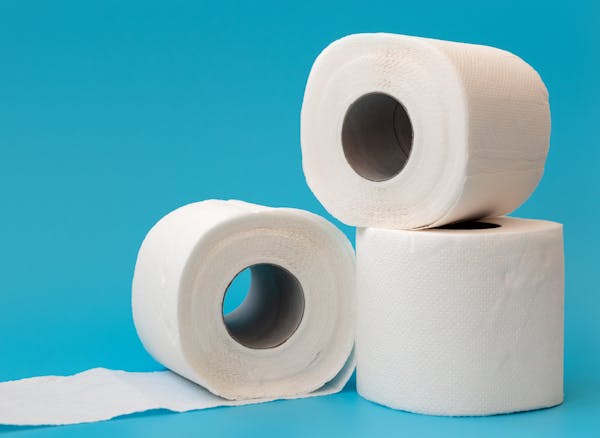If you stockpiled masks, hand sanitizer and toilet paper and are looking for ways to repurpose your excess, try these creative suggestions from local makers, designers and artists.
Masks
Steve Jevning, co-executive director of the Leonardo's Basement maker organization in Minneapolis, suggested that paper masks "make adequate parachutes for small toy people and animals. You can even turn them into clothing for dolls and dogs."
"I can use it to polish my sunglasses," said Reid Lutter, CEO of Podiumwear, referring to the masks his St. Paul clothing company made before switching back to making jerseys for mountain bikers, soccer players and cross-country skiers. Another use for an extra mask: "It works great as a quick sweat rag," he added.
Masks might also be repurposed as a hammock tied to a garden stake to cradle a melon growing on a vine, said Barry Kudrowitz, a University of Minnesota product design professor.
Cloth masks could make evocative patches for a visible mending aesthetic, suggested Julie Kearns, an online retailer specializing in vintage and secondhand goods at shopjunket.com.
Feeling like making a statement? Many masks could be sewn together in a quilt to commemorate loss, much like the AIDS quilt, offered Jeremy Clark, a Minneapolis designer, artist and maker.
Hand sanitizer
Alternative uses of hand sanitizer include using it as a fire starter (if it's alcohol-based). It can also be used to polish silver, to wash paint off your hands or to take off an adhesive bandage painlessly.
You could also clean just about anything from your keyboard to your eyeglasses and your smartphone with excess sanitizer, perhaps with the help of an unused mask.
Toilet paper
There are several gardening applications for toilet paper, including using the cardboard rolls as biodegradable seed-starting pots, or creating seed-planting tape.
And there are lots of artsy/crafty applications for the rolls like making decorations, tiny gift containers or little bird feeders.
Toilet paper can be used to create a variety of sculptures by wetting it and adding a solution of white glue to the water, according to Carol Sirrine, executive director of the ArtStart, the St. Paul arts education nonprofit. Once dry, the sculptures can be painted.
Some people have used molded sheets of toilet paper to make lifelike sculptures of food. Others have made the rolls into sculptures of faces or miniature cityscape dioramas.
Full rolls can fit into empty, square facial tissue boxes as a do-it-yourself refill. Some survivalist videos suggest that you can stuff a roll of toilet tissue into a tin can and soak it with alcohol (maybe using some of your hand sanitizer). Once you light it, it becomes an emergency camp stove. (Please don't do this indoors.)
Or you can buy a toy called the Toilet Paper Blaster, which combines a roll of toilet paper with a water reservoir to automatically make hygienic spitballs. One roll of toilet paper is enough ammunition for more than 350 spitballs that will shoot up to 30 feet, according to the product description.
For even more potty humor, there's the do-it-yourself toilet paper cannon, in which you simply duct tape a paint roller to the end of an electric leaf blower and attach a roll of toilet paper.
If you do it right, once you turn on the blower, you can send a stream of toilet paper shooting into the air. It only takes a few seconds to empty an entire roll up into the neighbor's tree.
If someone complains, you can always claim that you're doing it as a science experiment to test Bernoulli's principle.
Richard Chin • 612-673-1775

Motormouth: Oil type not an issue

Brides trade boozy parties for wellness retreats



